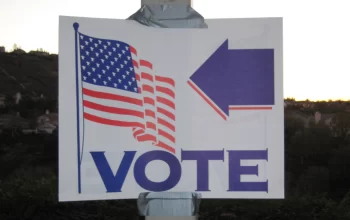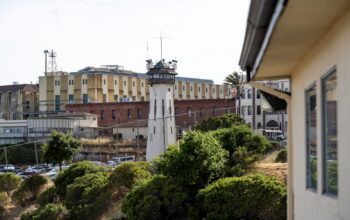I travel to Northern California a lot, from Simi Valley. I usually gas up at Santa Nella, about 273 miles from my home, then go the next 150 miles or so. It takes me about three minutes to gas up at the AM-PM. Were I driving an electric vehicle, I would have to charge up three times—taking over an hour each time, just to get a 70% charge—you can’t recharge more than 80% without harming the battery. Oh, and the FULL cost if recharging vs. gas vehicle, the EV is more expensive to the owner and the environment.
“Fast chargers will bring the battery only to an 80% total charge due to the limitations of lithium batteries. Charging above 80% will damage the battery. Since I arrived at the charging station with ten percent capacity remaining, I received an additional 70% charge, which gave me about 190 miles total range. It required one hour and ten minutes. The cost was $21.07, or 43 cents per kW. The cost would be about 34 cents per kW if I joined Electrify America for four dollars per month. Filling my gasoline vehicle for the same range would cost less – about $13. Charging an EV at a fast charger costs more per mile of range than filling up a gasoline-powered vehicle.”
Yup, I pay an $8 premium and lose an hour, just to be socially correct. Not worth it.
Op-Ed: The charging challenge: Electric vehicles and their drawbacks
Geoffrey Pohanka, RealClearWire, 3/1/21

Electric-powered cars are now the rage. Tesla’s market capitalization is seven times larger than that of General Motors and 14 times larger than Ford’s, though it builds a fraction of the vehicles that those companies do. Many politicians are even considering banning gasoline-powered cars within a few years in favor of electric vehicles (EVs), all in the name of saving the planet.
This has significant meaning to me. As a third-generation automobile dealer, I need to get ahead of the curve and prepare for what is next. I want to sell what people want to buy.
The charging challenge
I have driven the Volkswagen Golf EV, the Honda Clarity plug-in (PEV), and now the Hyundai Kona EV. All have good road characteristics and operate similarly to gasoline-powered cars, with the exception of how they are powered. I installed a Level II charger at my home. The cost: about $850. I’m fortunate that my fuse box is located in the garage, so I didn’t need much additional wiring. The garage is where I charge these EVs overnight.
What is it like to have to depend upon a public charging station? Tesla has a robust, nationwide rapid-charging infrastructure, but Tesla uses a proprietary charging plug that does not work with other makes of vehicles. Volkswagen, as part of its diesel settlement, has constructed a large charging network under the name of Electrify America. Electrify America has the closest rapid chargers to both my home and my office.
How long it takes a battery to charge depends upon four things: the capacity of the charger, the capacity of the battery, the battery discharge condition, and the rate of charge that the battery will accept. The Kona will accept up to a 75 kW rate of charge.
Fast chargers will bring the battery only to an 80% total charge due to the limitations of lithium batteries. Charging above 80% will damage the battery. Since I arrived at the charging station with ten percent capacity remaining, I received an additional 70% charge, which gave me about 190 miles total range. It required one hour and ten minutes. The cost was $21.07, or 43 cents per kW. The cost would be about 34 cents per kW if I joined Electrify America for four dollars per month. Filling my gasoline vehicle for the same range would cost less – about $13. Charging an EV at a fast charger costs more per mile of range than filling up a gasoline-powered vehicle.
What struck me first was how this could possibly work for me if I had to rely entirely on fast chargers and instead of my home charger. I drive at least 80 miles each day, which means I would have to recharge my Kona every other day assuming that I did not do more driving than just between my home and the office. Since it required over one hour to charge the battery, I would have to spend over 200 hours annually charging my vehicle – the equivalent of 25 eight-hour working days. And this assumes that I never had to wait in line for another vehicle to finish charging and that the charging station was nearby when I needed one.
If I lived in a town home, or an apartment, without access to a Level II home charger, I would have to rely entirely on the public fast-charging network. And instead of a 250-mile range, I would have only about a 190-mile range to work with.
I then decided to try another large public, non-Tesla, super-charging network – EVgo. Both EVgo and Electrify America have apps that provide various functions including station locations. Both provide membership discounts. Electrify America does a good job communicating via texts while you are charging, and EVgo’s app provides access to your complete charging history. I could use my credit card at the Electrify America charging station, but to use some EVgo chargers, one must first acquire a swipe card.
At the EVgo charging station at a major-area shopping center, I saw two charging towers with four cords. Two 50 kWh cords fit the Nissan Leaf and two cords fit my Hyundai Kona. I plugged my car in, swiped the card over the reader, and began charging. The charger screen said that with my 11% safety range that I drove in with, an 80% charge would require one hour and 17 minutes. I was prepared, though, and used the time to finish a book, watch part of a Netflix series, and even close my eyes for a few minutes.
After a while, something did not seem right. Looking at the screen on the charger, I saw that my session had ended about 20 minutes earlier. My car had apparently not received its full 80% charge. Wanting to complete my charge, I simply started a new session and 25 minutes later drove back to the office. I wasn’t sure why I was unable to get the full 80% charge and decided to try the same charger again a few days later to see if that session would be any different.
The second time I visited the same EVgo 50kW charging station, the session ended after 45 minutes. My battery had achieved only a 65% charge with a 163-mile range (less if I need to use my vehicle’s heater). This is considerably less than the 250-mile maximum range of a fully charged battery or the approximately 200-mile range of an 80% charged battery. I then called the EZgo toll-free number on the charging station. EZgo cutely names each of its chargers, and mine was named Ladarius. The EVgo operator promptly answered, and I described my charging experience. I was not expecting to hear that the charging session is supposed to end at 45 minutes because charging for longer would damage my vehicle’s battery. “If you charge your car over 45 minutes, your battery will be worth nothing in a year.” I knew that this information was inaccurate; I thanked the operator and ended the call. This charging session required one hour and 53 minutes, including the 40-minute round trip between my office and the charging station.
The EVgo website states that vehicles can be nearly fully charged (to 80%) in under 30 minutes using their fast chargers. This was not my experience. My 80% charge, if I could get one, would require one hour and 17 minutes, according to the EVgo screen. The EVgo website also explains that it provides only 45-minute charging sessions, though 60-minute sessions, from 8 p.m. to 6 a.m., were available for a $7.99 monthly subscription.
If I had to solely rely on EVgo for charging my Hyundai Kona Ultimate EV with its 250-mile maximum range, and following the EVgo “etiquette,” I would have to operate with a 165-mile range and only 145 miles of that usable range, allowing for a 20-mile safety cushion. Driving a minimum of 80 miles each day back and forth to work, I could not even drive two round trips without having to recharge the battery.
I found the Electrify America charging network superior to EVgo. Electrify America provides a full 80% charge. EVgo charges 30 cents per minute, and the cost to charge my Kona per kWh was between 40 and 44 cents. With the $7.99 per-month membership, the cost is reduced 10%. A non-member using Electrify America pays 43 cents per kWh and 31 cents per kWh with a $4 monthly membership fee. Power costs might vary among states.
Some other challenges
The other drawback to EVs is their higher cost. The MSRP of the 2021 Hyundai Kona Ultimate I have been charging is $46,985. The same model powered by gasoline has an MSRP of $31,370, or over $15,000 less. I have read that one reason for the price differential is that to manufacture a 1,000-pound battery requires the processing of 50,000 pounds of ore, and one must move 500,000 pounds of overburden to get the ore. The lithium, cobalt, copper, and rare-earth minerals required to manufacture the battery largely come from overseas. Eighty percent of battery manufacturing takes place in China, so this is likely to have an impact on our trade imbalance and energy independence.
EVs start their lives with a larger carbon footprint than gasoline vehicles. Another question is how these batteries will be charged, since electricity mostly comes from non-renewable energy sources such as coal, natural gas, and nuclear energy. Some speculate that EV costs will decline with mass production, and that battery-charging times will be reduced with newer technologies. If this does not occur, then affordability, lack of range, and charging times will be major handicaps.
In conclusion
Besides the extra cost to buy an EV and the larger carbon footprint, the greatest challenge will be what to do with all those hours spent waiting while one’s car is charging.
I have ordered the Volkswagen ID.4 EV 1st Edition model SUV and look forward to its delivery this spring. The ID.4 comes with three years of free charging using the Electrify America network, a 250-mile range, and a more rapid rate of charge. I believe that the ID.4 will be a winner, both from a cost and performance standpoint. I will put it to the test once I have it.
Unless battery-charging times are significantly reduced, however, and the network of available charging stations is substantially increased, EV consumers will find it challenging to rely primarily on public fast-chargers.



